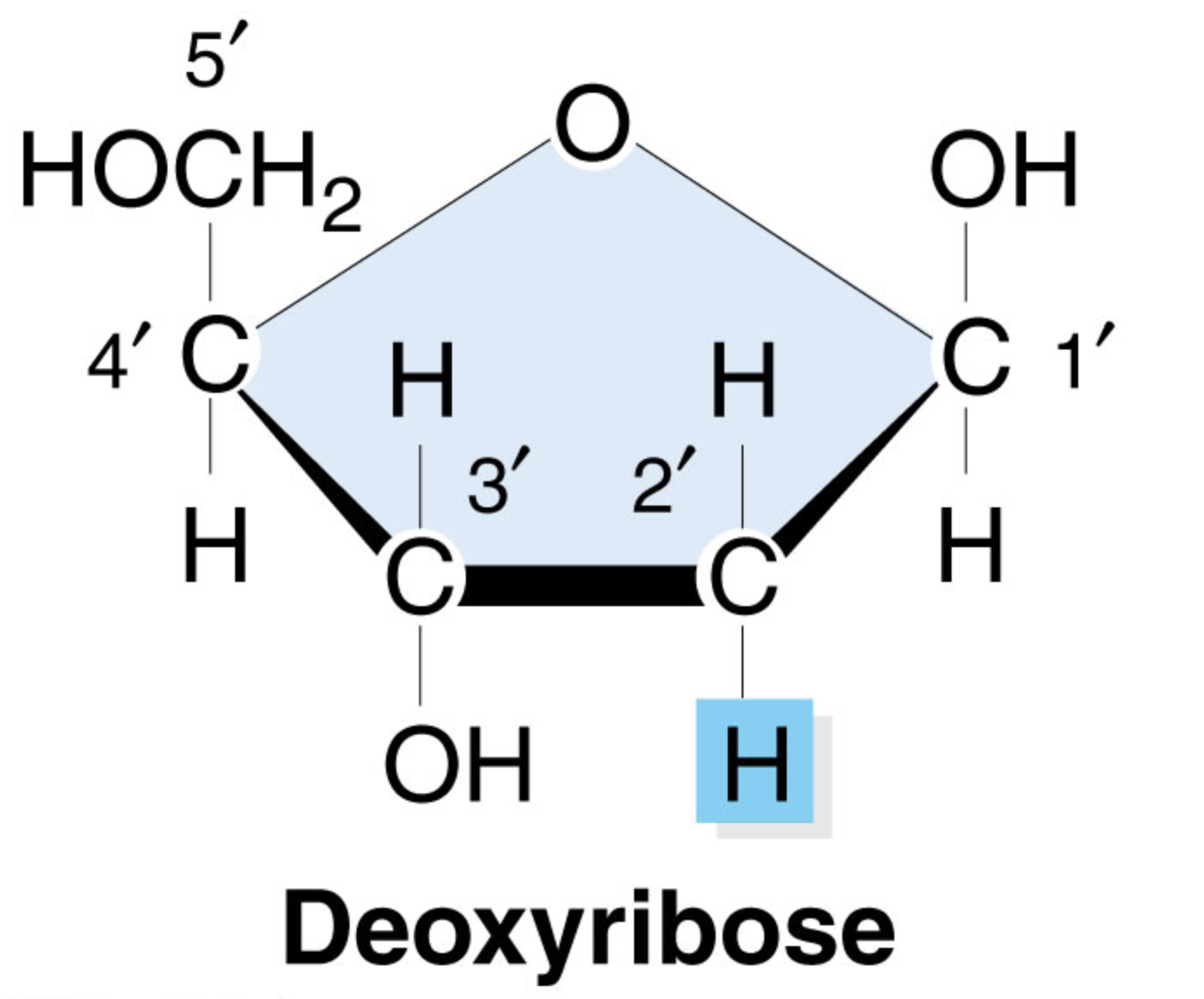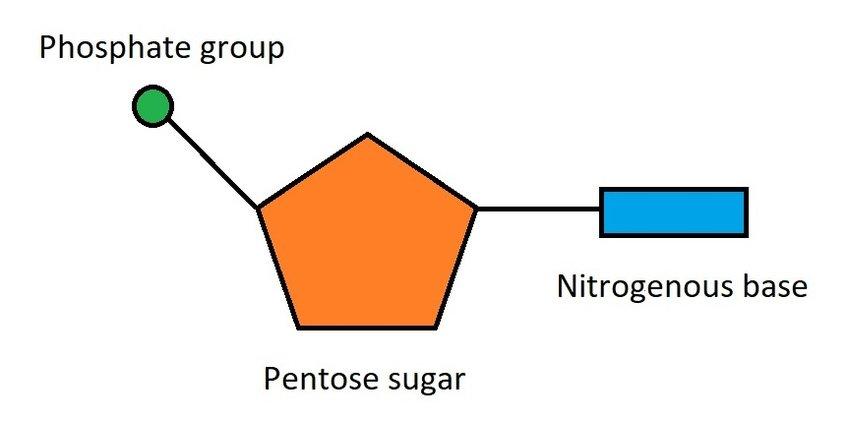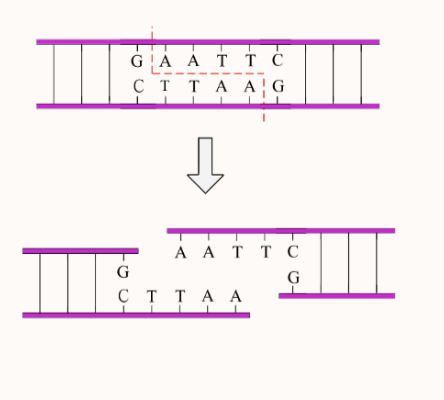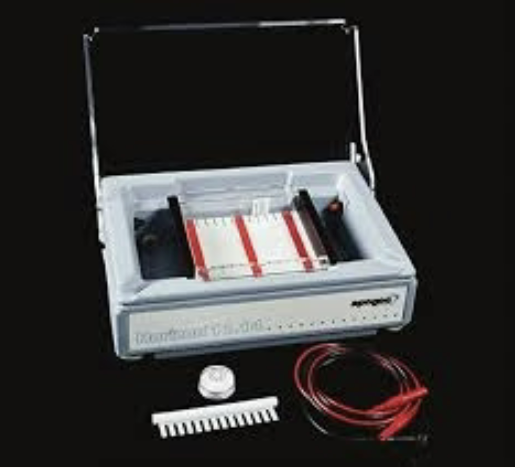Cumulative BioTech test
1/49
Earn XP
Description and Tags
Name | Mastery | Learn | Test | Matching | Spaced |
|---|
No study sessions yet.
50 Terms
deoxyribonucleic acid
What does DNA stand for?
DNA
What is a gene made of?
The production of RNA/RNA production
What does a gene code for?
double-helix
What is the shape of DNA?
C5H10O4
What is the formula for deoxyribose?

nucleotides
What is the monomer for DNA?

phosphodiester bonds
What is the name of the bonds that form between nucleotides on a single chain between phosphate groups and sugars? Hint: It forms between the phosphate group of one nucleotide and the 3’ hydroxyl group on the previous nucleotide’s sugar
hydrogen bonds
What are the bonds that form between nucleotides across two different chains (between bases)?
phosphate group
pentose/5’ carbon sugar (deoxyribose)
nitrogenous base
What are the three parts of a nucleotide?
Adenine, Thymine, Guanine, Cytosine
What are the four nitrogenous bases (in DNA)?
Adenine (A) & Thymine (T), Guanine (G) & Cytosine (C)
What are the complementary base pairings?
Adenine and Guanine
Which nitrogenous bases are purines (double-rings)?
Thymine and Cytosine
Which nitrogenous bases are pyrimidines (single-ring)?
2
How many hydrogen bonds do Adenine and Thymine have?
3
How many hydrogen bonds do Cytosine and Guanine have?
antiparallel
How do we describe the two DNA strands running in opposite directions? (one goes from 5’→3’ and the other goes from 3’→5’)
sugar and phosphate
What forms the DNA backbone?
Watson & Crick
Who wrote the paper describing the structure of DNA? Hint: They determined that…
nucleotides form long strands of DNA
each DNA molecule consists of two strands that form a double helix
Erwin Chargaff
Who collected data to show that the amount of A = T and C = G?
The amount of Adenine is equal to the amount of Thymine, and the amount of Guanine is equal to Cytosine. If one base is present, then its base pairing is also present.
What are Chargaff’s rules?
X-ray crystallography
What technique did Rosalyn Franklin use on DNA?
Friedrich Miescher
Who isolated DNA and discovered a white, sugary substance that was called “nuclein” (later renamed “nucleic acids”)?
bacteria / prokaryotes
Which type of cell has plasmids?
sticky ends
How do we describe the cut by EcoRI as shown in the image?

DNA ligase
What enzyme can repair phosphodiester bonds between nucleotides?
restriction site
What is the name of the location where a restriction enzyme cuts DNA?
4-8 bp
How long are most restriction sites?
Gel electrophoresis, parts: box, tray, bed, comb, damns, cables
What is the tool in the image used for? Name the parts

agar
What is the name of the media in Petri dishes?
base pairs / kilobase pairs
What units measure the length of DNA fragments?
insulin, growth hormone
Name a medicine produce with rDNA
3 billion bp
How many base pairs are in the human genome?
gel electrophoresis
what technique is used to separate DNA fragments?
viruses that infect bacteria
What are phages (ex: Lambda)?
1000
How many microliters (μL) equals 1 mL?
250
0.250 mL is equal to how many microliters?
Phosphate group
What part of a DNA molecule is charged?
EcoRI / HindIII / PstI
Name two restriction enzymes
pGLO
What is the name of the plasmid that carries the GFP (Green Fluorescent Protein) gene?
smallest
In gel electrophoresis, which fragments move the fastest/furthest? The smallest or largest?
transilluminator
What tool is used to visualize the DNA in the gel?
5
If a DNA sample has four restriction sites for a particular restriction enzyme, how many fragments will be produced?
Luria Bertani (LB)
What is the name of the “food” supplied to bacteria in a petri dish? (Hint: it’s called the “broth”)
E. coli
Name a well known prokaryote.
amanaplanacanalpanama
restriction sites are palindromes
Give an example of a palindrome. How is this relevant to biotech?
sugars and phosphates
What makes up the backbone of the DNA ladder?
buffer
What covers the agarose gel to conduct electricity and maintain the pH?
the positive, red electrode
In gel electrophoresis, DNA migrates to which end?
DNA → RNA → protein
What is the central dogma of biology?